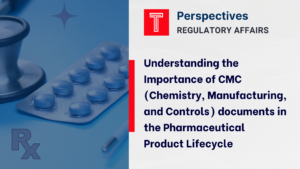Leveraging Pre-Clinical Data to Optimize Patient Safety Management During Early Phase Clinical Trials
Pre-clinical data plays a crucial role in managing patient safety during early phase clinical trials. It provides valuable insights into the safety profile of the investigational product and helps sponsors to proactively identify and manage potential safety risks, optimize dose selection, establish robust safety monitoring plans, manage adverse events and implement risk mitigation strategies during early phase clinical trials. This approach promotes patient safety, ensures the reliability of clinical trial data, and contributes to the overall success of the drug development process.
In this blog, we have outlined the key areas of how to effectively leverage pre-clinical data to develop a comprehensive safety management strategy in early phase clinical trials.
Determining the Therapeutic Index: Pre-clinical data helps establish the therapeutic index, which is the ratio between the minimum effective dose and the maximum tolerated dose. By evaluating the dose-response relationship in pre-clinical studies, researchers can identify the range of doses that exhibit therapeutic effects while minimizing toxicity.
Practical Tip: Select a starting dose for the clinical trial that is below the maximum tolerated dose determined from pre-clinical studies. This conservative approach ensures patient safety by minimizing the risk of adverse events while allowing for potential efficacy.
For example, Pre-clinical studies on a new cancer drug revealed that the minimum effective dose required to inhibit tumor growth was 10 mg/kg, while the maximum tolerated dose without significant toxicity was found to be 30 mg/kg. This data allowed researchers to establish a therapeutic index of 3:1, guiding the selection of appropriate doses for further clinical trials.
Assessing Safety Margins: Pre-clinical data enables the assessment of safety margins between effective doses and toxic doses. By identifying the No Observed Adverse Effect Level (NOAEL) or the Maximum Tolerated Dose (MTD), researchers can establish a safe range of doses for human subjects.
Practical Tip: Set the starting dose for the clinical trial below the NOAEL or at a fraction of the MTD determined from pre-clinical studies. This approach ensures that participants are exposed to a dose that is well within the safety margin and minimizes the risk of severe adverse events.
For instance, in pre-clinical studies of a new cardiovascular drug, the No Observable Adverse Effect Level (NOAEL) was determined to be 100 mg/kg, while the Maximum Tolerated Dose (MTD) was found to be 200 mg/kg. To ensure patient safety, the starting dose for the clinical trial was set below the NOAEL, at 50 mg/kg, allowing for a margin of safety and gradual evaluation of the drug’s efficacy.
Evaluating Pharmacokinetics and Pharmacodynamics: Pre-clinical studies provide insights into the pharmacokinetic and pharmacodynamic properties such as bioavailability, half-life, clearance, and volume of distribution for the investigational product. Using this data, researchers can determine the optimal dose frequency, duration, and route of administration.
Contact us by submitting a business inquiry online. We will get back to you very soon.
Practical Tip: Consider the pharmacokinetic profiles of the investigational product in pre-clinical studies to estimate appropriate dosing intervals in humans. Adjust the starting dose in the clinical trial based on the expected exposure levels and desired pharmacodynamic effects.
To give an example, through pre-clinical studies of an oral antibiotic, it was observed that the investigational product had a half-life of 6 hours and reached peak plasma concentration within 2 hours of administration. Based on this pharmacokinetic profile, it was estimated that dosing intervals of 8 hours would maintain therapeutic levels in humans, ensuring consistent efficacy against target pathogens.
Dosing Regimen Design: Pre-clinical data helps in designing the dosing regimen for the clinical trial. By understanding the drug’s pharmacokinetic parameters, researchers can determine the optimal dosing frequency, duration, and route of administration.
Practical Tip: Consider the pre-clinical pharmacokinetic profiles to establish dosing intervals and administration routes that maintain therapeutic drug levels within the desired range. This ensures consistent exposure to the drug while minimizing the risk of toxicity or subtherapeutic effects. As an example, In pre-clinical studies of a long-acting injectable contraceptive, it was found that the investigational product had a slow-release profile with a half-life of 30 days. Based on this pharmacokinetic profile, dosing intervals were established at once every month to maintain therapeutic drug levels within the desired range, providing effective contraception for an extended duration in human subjects.
Assessing Target Organ Toxicities: Pre-clinical studies enable the identification of potential target organs and toxicities associated with the investigational product. By evaluating organ-specific toxicities, researchers can assess the potential risks and establish safe doses for clinical trials. Through histopathological examinations, imaging techniques, and other assessments, researchers can identify the organs that are most susceptible to the drug’s actions. By understanding the specific target organs, researchers gain insights into the drug’s mechanism of action and potential therapeutic benefits. This knowledge helps guide clinical trial design and focus on relevant patient populations.
Practical Tip: Adjust the starting dose based on pre-clinical data to minimize the risk of target organ toxicities observed in animal models. Use the data to guide the selection of doses that maintain efficacy while minimizing organ-specific adverse effects. For example, in the animal studies, renal toxicity was observed at a dose of 100 mg/kg. To establish a margin of safety and minimize the risk of adverse effects, the starting dose for human clinical trials is set at 10 mg/kg, which is one-tenth of the toxic dose observed in animals.
During the clinical trial phase, the 10 mg/kg dose of Drug X is administered to human subjects. Efficacy is monitored, and regular assessments of renal function and potential adverse effects on the kidneys are conducted. If the starting dose demonstrates efficacy without significant renal toxicity, subsequent cohorts or phases of the trial may gradually increase the dose to find the optimal therapeutic dose.
Considering Species Differences: Pre-clinical data helps identify potential differences in drug response between animal models and humans. These differences may include variances in drug metabolism, elimination, or target engagement. It provide insights into the metabolism of the investigational drug in animal models. This includes understanding how the drug is broken down and processed by various enzymes and pathways in the body. However, it is essential to recognize that there can be species-specific differences in drug metabolism.
By comparing pre-clinical metabolism data with known human metabolic pathways, researchers can identify potential differences that may impact drug response in humans. This information is crucial for understanding how the drug may be transformed and cleared in human subjects during clinical trials.
Practical Tip: Take species differences into account when determining the starting dose for the clinical trial. Consider factors such as body weight, metabolic rates, and the expected sensitivity of the target organ in humans. Adjust the dose accordingly to ensure a safe and effective starting point. By leveraging pre-clinical data in dose selection and starting dose determination, researchers can optimize patient safety by establishing an appropriate dose range for clinical trials. Variations in drug elimination processes between animal models and humans can impact the drug’s pharmacokinetic profile, leading to differences in exposure and efficacy. Pre-clinical data help identify such variances, allowing researchers to account for these differences when designing clinical trials.
Example: Pre-clinical investigations of an experimental anti-inflammatory drug revealed that animal models exhibited greater sensitivity to the drug’s side effects compared to humans. Taking into account this species difference, the starting dose for the clinical trial was determined by considering a lower level, reducing the potential risk of adverse reactions in human subjects.
Identification of Potential Adverse Effects: Pre-clinical data allows for the identification of potential adverse effects or toxicities associated with the investigational product. By analyzing the pre-clinical safety data, researchers can anticipate and monitor specific adverse events during the clinical trial.
Practical Tip: Develop a comprehensive adverse event management plan based on the pre-clinical safety data. Establish specific criteria and procedures for the identification, documentation, and reporting of anticipated adverse events in the clinical trial. For example, based on pre-clinical safety data of a new anti-cancer drug, a comprehensive adverse event management plan was developed for the clinical trial. The plan included regular monitoring of participants for potential adverse events, such as hematological abnormalities, cardiac toxicity, and gastrointestinal disturbances. Specific criteria were established to assess the severity and significance of these events. Depending on the nature and severity of the adverse events, the plan outlined appropriate interventions, including dose adjustments, supportive care measures, patient withdrawal, or trial discontinuation, ensuring participant safety and welfare throughout the trial.
Determination of Dose-Related Adverse Events: Pre-clinical studies provide insights into the dose-response relationship of the investigational product. By evaluating the pre-clinical data, researchers can identify dose-related adverse events and anticipate their occurrence at higher doses in human subjects clinical trial.
Practical Tip: Incorporate the dose-related adverse events observed in pre-clinical studies into the safety monitoring plan for the clinical trial. Set thresholds or criteria for dose adjustments, patient withdrawal, or trial discontinuation based on the occurrence or severity of these adverse events.
Here is an example scenario. Drug Y is a novel investigational drug undergoing clinical trials. Pre-clinical studies have revealed dose-related adverse events, specifically gastrointestinal toxicity, in animal models. To ensure the safety of human subjects in the clinical trial, the following safety monitoring plan is implemented:
Thresholds for Dose Adjustments:
– If mild gastrointestinal adverse events (e.g., mild nausea or transient diarrhea) occur in more than 20% of participants, a dose adjustment may be considered.
– If moderate to severe gastrointestinal adverse events (e.g., persistent vomiting, severe diarrhea) occur in any participant, an immediate dose adjustment is warranted.
Patient Withdrawal Criteria:
– If a participant experiences a severe gastrointestinal adverse event that significantly impacts their daily functioning or requires medical intervention, the participant will be withdrawn from the study.
– If a participant experiences recurrent moderate gastrointestinal adverse events despite dose adjustments, withdrawal may be considered to prioritize patient safety.
Trial Discontinuation Criteria:
– If a significant safety concern arises, such as a severe adverse event affecting multiple participants even after dose adjustments, trial discontinuation will be considered.
– If the occurrence of severe adverse events surpasses predefined thresholds (e.g., more than 5% of participants), trial discontinuation may be necessary to protect participant well-being.
Throughout the clinical trial, regular safety assessments are conducted to monitor adverse events and their severity. The data collected is reviewed by an independent Data Monitoring Committee (DMC) or Safety Monitoring Board (SMB) that oversees the trial’s safety.
Predicting Drug-Drug Interactions: Pre-clinical data helps in predicting potential drug-drug interactions with commonly used medications. By evaluating the drug’s metabolism pathways and interaction potential, researchers can anticipate and manage potential interactions during the clinical trial.
Practical Tip: Review pre-clinical data for indications of drug-drug interactions. Consider incorporating appropriate safety monitoring and assessments in the clinical trial to detect and manage potential adverse events resulting from drug-drug interactions. During the review process, it is important to assess the drug’s metabolism pathways, enzyme induction or inhibition potential, and any known interactions with specific drug classes. This evaluation helps determine the likelihood and severity of potential interactions in human subjects.
As an example, in the review of pre-clinical data for a new psychiatric medication, indications of drug-drug interactions were observed, particularly with medications that targeted the same neurotransmitter receptors. In response, the clinical trial’s safety monitoring plan incorporated assessments of psychiatric symptoms, vital signs, and electrocardiograms (ECGs) to detect and manage potential adverse events resulting from drug-drug interactions. Regular evaluations of medication efficacy and tolerability were also included to ensure appropriate management and adjustment of the treatment regimen.
Organ-Specific Toxicities: Pre-clinical data can help identify potential organ-specific toxicities associated with the investigational product. By analyzing the pre-clinical safety findings, researchers can focus on monitoring specific organs or systems during the clinical trial to detect any related adverse events.
Practical Tip: Include specific organ-specific safety assessments in the clinical trial protocol based on the pre-clinical data. Implement appropriate monitoring measures, such as laboratory tests or imaging, to detect and evaluate potential organ-specific adverse events. Determine the specific biomarkers or indicators associated with organ toxicity identified in pre-clinical studies. Include these tests in the clinical trial protocol and establish appropriate reference ranges or thresholds for monitoring changes in organ function or toxicity.
If the investigational product is expected to impact certain organs or tissues, consider incorporating imaging modalities such as MRI, CT scans, or ultrasound to assess structural and functional changes. These imaging techniques can help detect abnormalities or potential adverse effects in specific organs. Depending on the target organs or systems, consider incorporating specific functional assessments relevant to their physiology. For example, pulmonary function tests, cardiovascular assessments, or neurocognitive evaluations can be implemented to monitor potential adverse events in corresponding organ systems.
For instance, in pre-clinical studies of a new chemotherapy drug, researchers discovered potential organ-specific toxicities in the liver. The data revealed increased levels of liver enzymes and histopathological changes indicative of hepatotoxicity. This information helped identify the need for close monitoring of liver function and the implementation of appropriate safety measures during subsequent clinical trials to mitigate potential liver-related adverse events.
Early Detection of Safety Signals: Pre-clinical data provides a baseline for comparison with the clinical trial safety data. By analyzing the pre-clinical safety findings, researchers can establish expected safety profiles and detect safety signals or unexpected adverse events during the clinical trial.
Practical Tip: Develop robust procedures for the ongoing monitoring and detection of safety signals during the clinical trial. Implement regular safety review meetings or data monitoring committees to analyze and evaluate the clinical trial safety data in comparison to the pre-clinical safety data. Compare the clinical trial safety data with the pre-clinical safety data to assess consistency or deviations. This comparative analysis helps in identifying unexpected safety signals, confirming previously identified risks, or detecting any new safety concerns that were not evident in pre-clinical studies.
As an example, in pre-clinical studies of a new antipsychotic medication, researchers established a baseline safety profile that included minimal adverse events such as sedation and mild extrapyramidal symptoms. During the subsequent clinical trial, the pre-clinical safety data served as a reference point for comparison. Any unexpected or severe adverse events observed in the clinical trial, such as severe akathisia or cardiotoxicity, could be recognized as deviations from the established baseline and thoroughly evaluated.
Prediction of Pharmacological Interactions: Pre-clinical data can provide insights into potential pharmacological interactions with concomitant medications. By evaluating the pre-clinical data, researchers can anticipate drug-drug interactions and monitor for any related adverse events during the clinical trial.
Practical Tip: Review the pre-clinical data for any indications of pharmacological interactions with commonly used medications. Incorporate appropriate safety monitoring and assessments in the clinical trial to detect and manage potential adverse events resulting from drug-drug interactions. Based on the pre-clinical data, identify potential interactions between the investigational product and commonly used medications. Consider both pharmacokinetic interactions (such as changes in metabolism, absorption, or excretion) and pharmacodynamic interactions (such as additive or synergistic effects).
To give an example, in pre-clinical studies of a new anticoagulant drug, researchers discovered that the investigational product had the potential to interact with commonly used blood-thinning medications. The data indicated that the new drug could enhance the anticoagulant effects of the concomitant medications, increasing the risk of bleeding. This pre-clinical insight prompted researchers to consider appropriate dose adjustments or additional monitoring in subsequent clinical trials when the investigational drug was administered alongside these specific concomitant medications.
Identifying Potential Risks: Pre-clinical data provides insights into potential risks associated with the investigational product. By evaluating the pre-clinical safety findings, researchers can identify specific toxicities, organ-specific adverse effects, or other safety concerns. Mapping the pathways involved in the identified risks provides a visual representation of the biological processes affected by the investigational product. This mapping allows for a better assessment of the potential impact on specific organs, systems, or functions.
Practical Tip: Conduct a thorough review of the pre-clinical data to identify potential risks. Consider the severity, frequency, and predictability of adverse events observed in animal models. This helps in defining the scope of potential risks and informs risk assessment strategies in the clinical trial.
For example, pre-clinical studies of a novel anticancer drug demonstrated potential risks of bone marrow suppression and hematological toxicity, as evidenced by decreased red and white blood cell counts and platelet levels in animal models. This information informed the design of subsequent clinical trials, incorporating regular blood cell count monitoring and assessments to detect and manage potential adverse events associated with bone marrow suppression.
Risk Characterization: Pre-clinical data aids in characterizing the identified risks, including their mechanisms of action, target organs, and potential impact on human subjects. By understanding the nature of the risks, researchers can assess their significance and prioritize their management.
Practical Tip: Analyze the pre-clinical data to determine the underlying mechanisms and pathways involved in the identified risks. This helps in formulating appropriate risk characterization and provides insights into potential strategies for risk mitigation. Analyzing the mechanisms involved in the risks can help identify potential biomarkers or surrogate markers that can serve as indicators of safety concerns. This allows for the implementation of specific monitoring measures or laboratory assessments to detect early signs of adverse events related to the identified mechanisms.
Example: Pre-clinical studies of a new cardiotoxic drug revealed its mechanism of action, which involved inhibiting a specific ion channel in cardiac cells. This data helped characterize the identified risk and understand how the drug could potentially affect the heart. Researchers could then focus on monitoring cardiac function and assessing potential adverse events related to cardiotoxicity in subsequent clinical trials.
Risk Minimization Strategies: Pre-clinical data guides the development of risk minimization strategies to mitigate potential risks identified during the pre-clinical evaluation. These strategies aim to reduce the occurrence or severity of adverse events during the clinical trial.
Practical Tip: Based on the pre-clinical data, design risk minimization strategies such as additional safety monitoring measures, specific laboratory assessments, or inclusion/exclusion criteria modifications. These strategies should be implemented to minimize the identified risks while maintaining the trial’s scientific objectives. This may involve dose adjustments, medication discontinuation, participant counseling, or other measures to minimize the risk or impact of these interactions.
For example, Pre-clinical studies of a new immunosuppressant drug revealed potential risks of increased susceptibility to infections due to its mechanism of action. Based on this data, the development team implemented risk minimization strategies during subsequent clinical trials. These strategies included regular monitoring of participants for signs of infection, proactive vaccination against common pathogens, and the use of prophylactic antibiotics to minimize the risk of infections and ensure participant safety.
Post-authorization Safety Studies (PASS): Pre-clinical data can inform the design and implementation of post-authorization safety studies. These studies are conducted after marketing authorization to further evaluate the safety profile of the product.
Practical Tip: Based on the pre-clinical safety data, identify specific areas of concern that warrant post-authorization safety studies. Design appropriate studies, such as long-term safety monitoring, assessment of rare adverse events, or special population evaluations, to address the identified risks. If the pre-clinical data suggests the potential for long-term safety concerns, design post-authorization studies focused on monitoring the product’s safety over extended periods. These studies aim to assess any delayed or cumulative adverse effects that may not have been evident during the initial clinical trials. If the pre-clinical data raises concerns about the product’s safety in specific patient populations (such as pediatrics, elderly individuals, or those with comorbidities), develop post-authorization studies that focus on evaluating the safety profile in these populations. These studies may involve targeted recruitment and specialized assessments to address the unique safety considerations for these patient groups.
As an example, pre-clinical studies of a new medication for a rare disease indicated potential long-term effects on organ function. Based on this data, post-authorization safety studies were designed and implemented to monitor patients for any potential late-onset adverse events, evaluate long-term organ function, and assess the overall safety profile of the medication in a larger patient population.
Risk Communication: Pre-clinical data contributes to effective risk communication with stakeholders, including healthcare professionals, regulatory authorities, and trial participants. By leveraging the pre-clinical safety findings, researchers can provide accurate and transparent information about potential risks.
Practical Tip: Utilize the pre-clinical data to prepare clear and concise risk communication materials. Include information on potential risks, risk mitigation strategies, and steps taken to ensure participant safety. Describe the steps taken to ensure participant safety during the clinical trial. Highlight safety monitoring measures, assessments, and procedures that have been implemented to detect and manage potential risks based on the pre-clinical data. This promotes transparency, informed decision-making, and fosters trust among stakeholders.
For instance, pre-clinical investigations of an experimental vaccine highlighted potential risks of mild injection site reactions and flu-like symptoms. Regulatory authorities were provided with comprehensive pre-clinical data, including safety findings, to support the vaccine’s regulatory approval. Clear and concise risk communication with regulatory authorities, including accurate reporting of potential adverse events and their frequency, contributed to the decision-making process and informed the vaccine’s recommended usage and safety monitoring requirements.
Adverse Event Reporting: Pre-clinical data helps in understanding potential adverse events associated with the investigational product. By analyzing pre-clinical safety findings, researchers can anticipate and identify adverse events that may occur during the clinical trial.
Practical Tip: Incorporate the pre-clinical data into the adverse event reporting process. Develop standardized procedures and forms for documenting and reporting adverse events, ensuring that the information collected aligns with the pre-clinical findings. This facilitates accurate and comprehensive reporting to regulatory authorities and ensures timely communication of safety information.
For example, pre-clinical data of a novel anticancer drug indicated potential adverse events such as bone marrow suppression and gastrointestinal toxicity. This information helped researchers understand the potential risks associated with the investigational product and guided the design of subsequent clinical trials. By analyzing the pre-clinical data, researchers were able to develop appropriate monitoring protocols and safety measures to detect and manage potential adverse events in human subjects.
Signal Detection and Validation: Pre-clinical data provides a baseline for comparison with clinical trial safety data, enabling the detection and validation of safety signals. By evaluating the pre-clinical safety profile, researchers can establish expected safety patterns and identify potential unexpected adverse events during the clinical trial.
Practical Tip: Use pre-clinical data to establish thresholds or criteria for safety signal detection and validation during the clinical trial. Implement robust processes for ongoing safety monitoring, including regular review of safety data, signal detection tools, and statistical analyses, to identify potential safety signals based on the pre-clinical findings.
Example: Pre-clinical studies of a new antipsychotic medication revealed a baseline safety profile with minimal adverse events such as sedation and mild extrapyramidal symptoms. During subsequent clinical trials, the comparison of pre-clinical and clinical trial safety data enabled the detection and validation of safety signals. If unexpected or severe adverse events, such as neuroleptic malignant syndrome or tardive dyskinesia, were observed in the clinical trial, they could be recognized as safety signals and further investigated in relation to the established baseline.
Safety Update Reports: Pre-clinical data contributes to the preparation of safety update reports, such as Periodic Safety Update Reports (PSURs). By analyzing pre-clinical safety findings, researchers can provide a comprehensive and accurate assessment of the product’s safety profile in the reports.
Practical Tip: Integrate the pre-clinical data into the safety update report preparation process. Ensure that the pre-clinical safety findings are appropriately incorporated, including summaries of relevant toxicological data, dose-response relationships, and any other safety-related information. This enhances the completeness and reliability of the safety update reports.
To illustrate, The PSURs incorporated information from pre-clinical studies, including the frequency, severity, and potential mechanisms of arrhythmias observed in animal models. By including this data in the safety update reports, regulatory authorities and stakeholders gained insights into the drug’s cardiac safety profile, helping them monitor and evaluate the occurrence of arrhythmias in clinical settings.
Safety Communication to Stakeholders: Pre-clinical data plays a crucial role in communicating safety information to various stakeholders, including healthcare professionals, regulatory authorities, and trial participants. By leveraging the pre-clinical safety findings, researchers can provide accurate and informative safety communications.
Practical Tip: Utilize the pre-clinical data to prepare clear and concise safety communications for different stakeholders. Include summaries of the pre-clinical safety profile, potential risks, and risk mitigation strategies. Tailor the communication to the target audience, ensuring that the information is accessible and easily understandable.
For example, pre-clinical safety data is communicated to patient advocacy groups and patient forums to ensure that patients have access to accurate and understandable information about potential risks associated with investigational products. By providing clear and comprehensive safety information, stakeholders can engage in meaningful discussions and make informed choices regarding treatment options and participation in clinical trials.
Safety Database Management: Pre-clinical data contributes to the management of safety databases during clinical trials. By integrating pre-clinical safety findings into the database, researchers can ensure comprehensive data collection and analysis.
Practical Tip: Include pre-clinical safety data as a component of the safety database. Develop data management protocols that facilitate the capture and linkage of pre-clinical and clinical safety data. This allows for holistic analysis and reporting of safety information, enhancing the accuracy and reliability of safety databases.
For example, In a clinical trial evaluating a new antipsychotic medication, pre-clinical safety data indicating the potential risk of extrapyramidal symptoms is included as a component of the safety database. The data management protocol ensures that adverse events related to extrapyramidal symptoms are accurately captured and linked to the pre-clinical findings. This allows for a comprehensive analysis of the safety profile and facilitates the identification of any potential correlations between pre-clinical data and clinical safety outcomes.
In conclusion, leveraging pre-clinical data is essential for optimizing patient safety management during early phase clinical trials. Integrating pre-clinical data into the clinical trial design and safety monitoring processes enhances the understanding of the investigational product’s safety profile and aids in early detection and management of adverse events. By proactively addressing safety concerns, researchers can minimize risks and ensure participant safety throughout the trial.
Are you looking to optimize your patient safety management in early phase clinical trials? Leverage Techsol’s PV expertise for comprehensive safety data management and reporting services. Contact us today to learn how we can assist you in effectively leveraging pre-clinical data, implementing robust safety strategies, and ensuring regulatory compliance. Enhance patient safety and drive successful clinical trial outcomes with Techsol as your trusted partner in Pharmacovigilance. Schedule a consultation with our team of professionals now!






